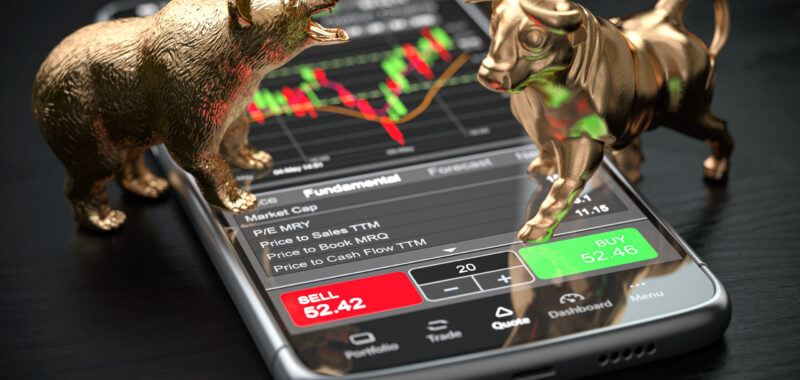Goldman Sachs just predicted the S&P index will generate paltry returns over the next decade.
Goldman Sachs strategists recently forecast their expected return for the S&P 500 for the next 10 years, and it wasn’t upbeat. The investment bank predicts that the S&P will only produce an average annual return of 3% over the next decade. That is well below the index’s approximately 13% return over the past 10 years and also well below its historic 11% return.
On top of that, Goldman’s prediction is down from an 8% average annual return it had previously expected. It cited the large concentration of top tech companies among the S&P’s top 10 holdings as well as a higher starting point for the index after recent strong returns. The Goldman strategists noted that the 36% concentration among the index’s top 10 holdings was its largest since the dot-com boom back in 2000.
Goldman believes the S&P equal-weighted index, one where all stocks are weighted the same, would outperform the market-cap weighted S&P index. Continuing its dire predictions, the investment bank said there was a 72% chance the S&P 500 underperforms Treasury bonds and a 33% chance it won’t keep up with inflation.

Image source: Getty Images.
What should an investor do?
If you’re like most investors, a fund that tracks the S&P 500, such as the Vanguard 500 S&P 500 ETF (VOO -0.91%), is likely a core part of your portfolio. As such, Goldman’s dire prediction could make you worried. However, there a few reasons why Goldman’s prediction likely will prove to be wrong.
For one, Goldman cited a higher starting point of the index, but currently the market is only two years into a bull market. A bull market typically lasts approximately three to four years, which would indicate that based on history, investors have another few years in front of them. However, some more recent bull markets have actually lasted much longer. For example, the bull market that started in 1987 lasted more than 12 years, and the bull market that began after the Great Recession lasted about 11 years.
Meanwhile, the S&P tends to perform well when the Federal Reserve is cutting rates as part of a rate normalization cycle, which appears to be the case. During the past three Fed rate-cutting periods done to normalize policy, the S&P has risen between 5% and 15% a year after the first Fed rate cut.
While Goldman didn’t explicitly state it, its prediction appears to be pricing in a correction for top tech stocks — the investment bank’s strategists are implying that a dot-com-style bust could happen with artificial intelligence (AI). However, there are a lot of differences between the AI boom and the dot-com boom.
One is valuation. For example, Nvidia, which is the main beneficiary of the AI infrastructure buildout, currently trades at a forward price-to-earnings (P/E) ratio of 35. That compares to Cisco Systems, whose hardware was the backbone of the internet buildout, trading at a peak forward P/E of 150 in 2020. Microsoft, meanwhile, was trading at around 75 times earnings, while today it trades at a P/E of 35.

MSFT PE Ratio data by YCharts
At the same time, there doesn’t appear to be any letup in sight for AI spending. The big reason for this is that for the technology to continue to improve and for AI models to advance, they just need exponentially more computing power to be trained on. With numerous companies looking to win the AI race, expect this spending to continue for many more years and to only increase.
Why market-cap-weighted indexes work
Another potential flaw in Goldman’s argument is the prediction that an equal-weighted S&P index would outperform. Now investors can buy equal-weighted S&P 500 exchange-traded funds (ETFs), such as the Invesco S&P 500 Equal Weight ETF (RSP -0.33%), if they want less stock concentration and tech exposure. Over the past decade, though, the Vanguard S&P 500 Index has outperformed it.
One of the beauties of the S&P 500 is that as a market-weighted index, it lets its winners win to become larger contributors to the index, while losing stocks become less important. By contrast, an equal-weighted index distributes its assets evenly among its 500 stock holdings — rebalancing them quarterly.
A J.P. Morgan study shows why the market-weighted approach outperforms. It found that 40% of stocks within the Russell 3000 Index between 1980 and 2020 suffered what it called catastrophic losses, which were losses of 70% or more from which they never recovered. Meanwhile, 10% of stocks were megawinners, outperforming the Russell 3000 by 500% or more during the period studied. It is these megawinners that help drive the market and index returns over time.
As such, I would continue to be a buyer of the Vanguard S&P 500 ETF. The ETF has been a long-term winner, and while it has a higher concentration of tech stocks at the top at present, there is a reason why these companies have become the largest companies in the world. Technology continues to develop and change our lives and that will continue over time.
JPMorgan Chase is an advertising partner of The Ascent, a Motley Fool company. Geoffrey Seiler has no position in any of the stocks mentioned. The Motley Fool has positions in and recommends Cisco Systems, Goldman Sachs Group, JPMorgan Chase, Microsoft, Nvidia, and Vanguard S&P 500 ETF. The Motley Fool recommends the following options: long January 2026 $395 calls on Microsoft and short January 2026 $405 calls on Microsoft. The Motley Fool has a disclosure policy.

